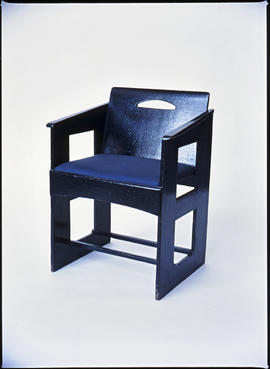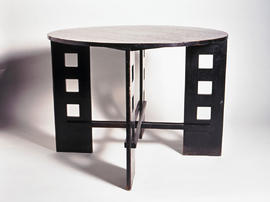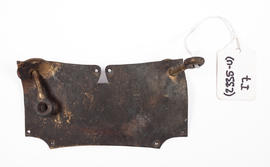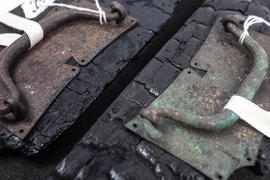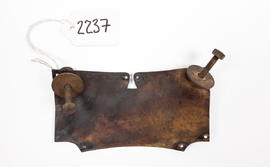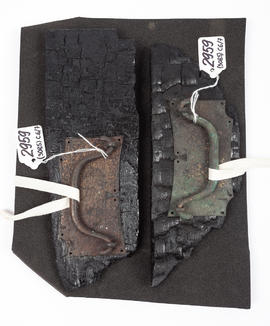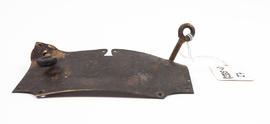Settle for the Willow Tea Rooms
- MC/F/51
- Item
- 1904
Designed as the order desk, at the Willow Tea Rooms, Glasgow. 'One of the most impressive and novel of Mackintosh's chairs, it stood in the centre of the ground floor saloons, isolated and defining the point at which the white Front Saloon became the dark Back Saloon. Designed six months before the curved screen at Hous'hill, it plays the same role in acting as a transparent division between two spaces which are actually part of the same room... The front of the seat also serves as a small locker or chest... The chest was provided for the supervisor who took orders from the waitresses and passed them to the kitchen by dropping coloured balls, coded to each dish on the menu, down a tube to the kitchen below.' (Roger Billcliffe). Reupholstered in brown horsehair 1984 (the settle was originally upholstered in a green and gold striped horsehair, matching the Willow armchairs).
This item was assessed for conversation in 2010 as part of the Mackintosh Conservation and Access project (2006-2010), and then again in 2018 following the fire in the Mackintosh Building in June 2018.
Mackintosh, Charles Rennie

